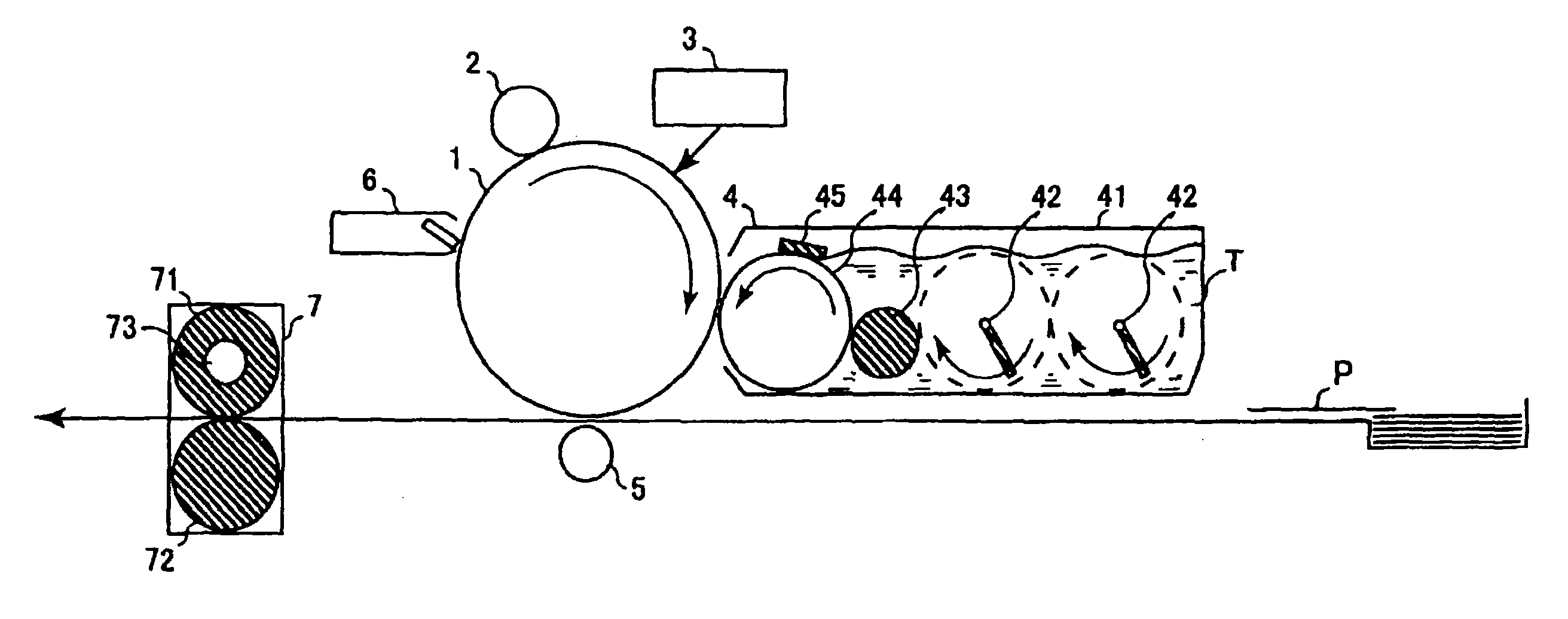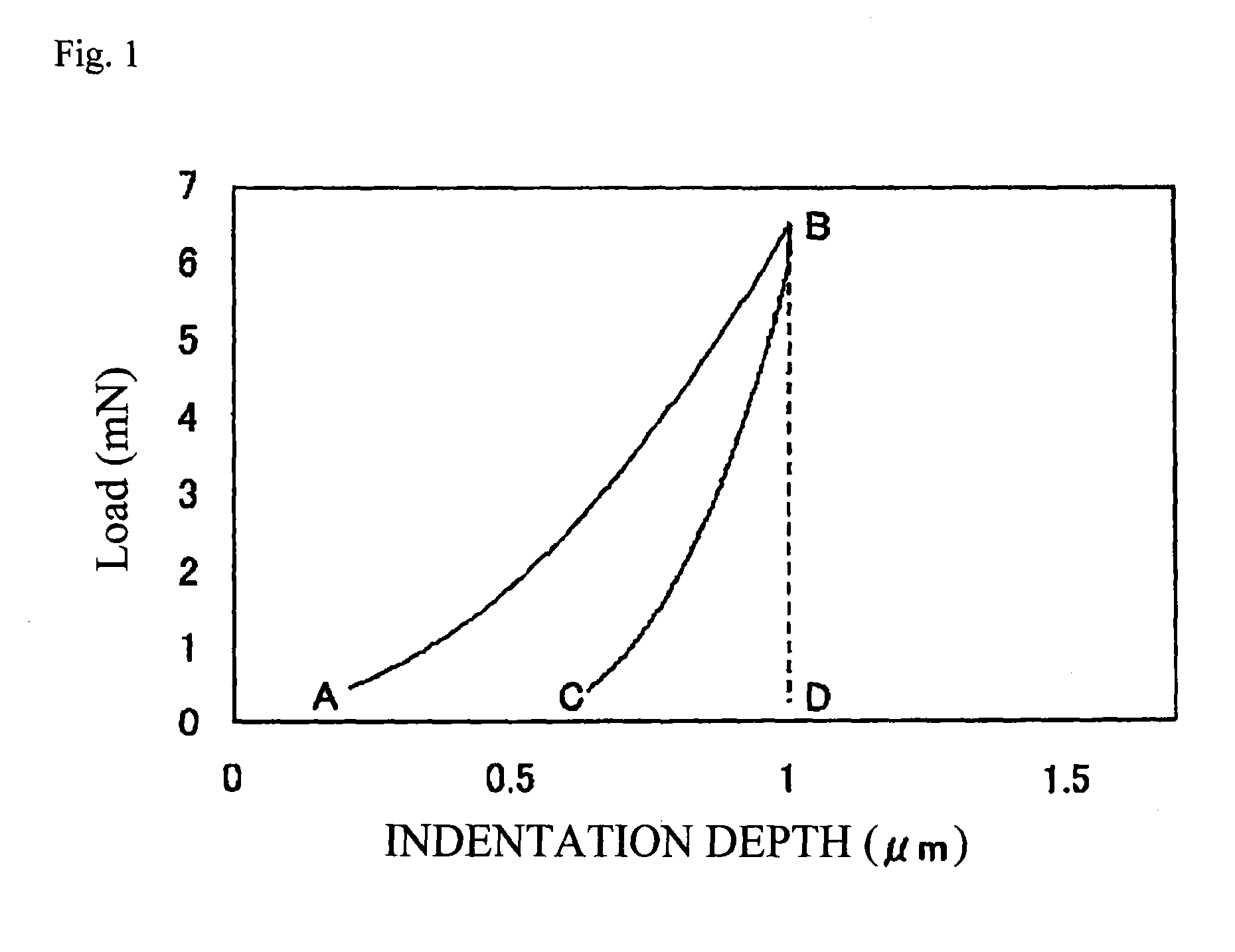Electrophotographic photoreceptor, electrophotographic photoreceptor cartridge, and image forming apparatus
a photoreceptor and electrophotography technology, applied in the field of electrophotographic photoreceptor cartridges, electrophotographic photoreceptor cartridges, and image forming apparatuses, can solve the problems of difficult formation of photosensitive layers having an even thickness, image defects, etc., and achieve satisfactory photosensitive layer adhesion and electrical properties and image characteristics. satisfactory
- Summary
- Abstract
- Description
- Claims
- Application Information
AI Technical Summary
Benefits of technology
Problems solved by technology
Method used
Image
Examples
production example 1
[0244]Into a 5-L pressure vessel equipped with a stirrer, thermometer, torque meter, manometer, nitrogen gas introduction port, pressure regulator, and polymer discharge port were introduced 400.0 g of 12-aminododecanoic acid and 100.0 g of adipic acid. After the vessel was sufficiently subjected to nitrogen displacement, the contents were gradually heated while supplying nitrogen gas at a flow rate of 500 mL / min. Stirring was conducted at a speed of 50 rpm. The contents were heated from room temperature to 240° C. over 3 hours, and polymerization was conducted at 230° C. for 4 hours to synthesize a nylon-12 oligomer.
[0245]To this oligomer were added 1,500.0 g of polytetramethylene glycol (PolyTHF1800, manufactured by BASF A.G.), 2.0 g of tetrabutyl zirconate, and 5.0 g of an antioxidant (Tominox 917). After the inside of the vessel was sufficiently subjected to nitrogen displacement, the reaction mixture was gradually heated while supplying nitrogen gas at a flow rate of 500 mL / min...
production example 2
[0247]Into a 5-L pressure vessel equipped with a stirrer, thermometer, torque meter, manometer, nitrogen gas introduction port, pressure regulator, and polymer discharge port were introduced 600.0 g of 12-aminododecanoic acid and 100.0 g of adipic acid. After the vessel was sufficiently subjected to nitrogen displacement, the contents were gradually heated while supplying nitrogen gas at a flow rate of 500 mL / min. Stirring was conducted at a speed of 50 rpm. The contents were heated from room temperature to 240° C. over 3 hours, and polymerization was conducted at 230° C. for 4 hours to synthesize a nylon-12 oligomer.
[0248]To this oligomer were added 1,800.0 g of polytetramethylene glycol (PolyTHF1800, manufactured by BASF A.G.), 2.0 g of tetrabutyl zirconate, and 5.0 g of an antioxidant (Tominox 917). After the inside of the vessel was sufficiently subjected to nitrogen displacement, the reaction mixture was gradually heated while supplying nitrogen gas at a flow rate of 500 mL / min...
production example 3
[0250]Into a 5-L pressure vessel equipped with a stirrer, thermometer, torque meter, manometer, nitrogen gas introduction port, pressure regulator, and polymer discharge port were introduced 800.02 g of 12-aminododecanoic acid, 1,049.30 g of an XYX type triblock polyether diamine (XTJ-542, manufactured by HUNTSMAN Corp.; total amine, 1.95 meq / g), 150.68 g of adipic acid, 2.81 g of a 35.55% by mass aqueous solution of sodium hypophosphite, and 5.00 g of an antioxidant (Tominox 917). After the inside of the vessel was sufficiently subjected to nitrogen displacement, the contents were gradually heated while supplying nitrogen gas at a flow rate of 500 mL / min. Stirring was conducted at a speed of 50 rpm. The contents were heated from room temperature to 225° C. over 4 hours, and polymerization was conducted at 225° C. for 10 hours. Subsequently, the stirring was stopped, and a colorless and transparent polymer in a molten state was discharged in a string form through the polymer dischar...
PUM
| Property | Measurement | Unit |
|---|---|---|
| temperature | aaaaa | aaaaa |
| thickness | aaaaa | aaaaa |
| electrolytic voltage | aaaaa | aaaaa |
Abstract
Description
Claims
Application Information
 Login to View More
Login to View More - R&D
- Intellectual Property
- Life Sciences
- Materials
- Tech Scout
- Unparalleled Data Quality
- Higher Quality Content
- 60% Fewer Hallucinations
Browse by: Latest US Patents, China's latest patents, Technical Efficacy Thesaurus, Application Domain, Technology Topic, Popular Technical Reports.
© 2025 PatSnap. All rights reserved.Legal|Privacy policy|Modern Slavery Act Transparency Statement|Sitemap|About US| Contact US: help@patsnap.com



